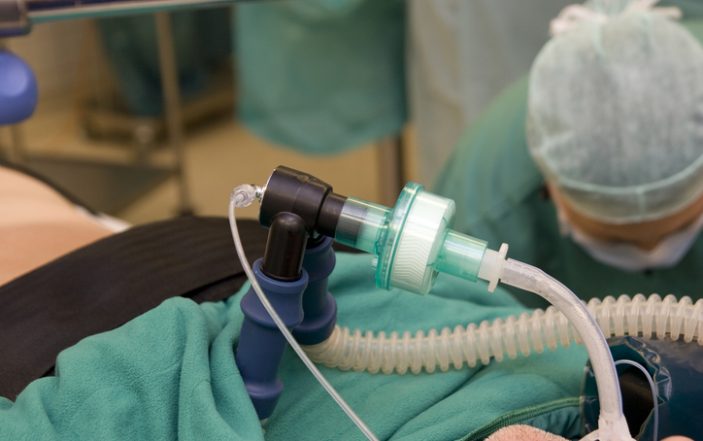Could your patient with remote history of COVID, now presenting with shortness of breath, have tracheal stenosis? It is certainly an uncommon but well-described complication of mechanical ventilation. Risk factors include tracheostomy and a prolonged course of mechanical ventilation, which studies report could be as short as seven days. Each of these factors characterize a not insignificant proportion of survivors of severe COVID.
Further, it has been reported that patients who required mechanical ventilation for severe COVID, and who went on to develop tracheal stenosis do not respond as well to standard treatments for tracheal stenosis, including steroids, balloon dilation and laser ablation.
Most concerning of all, one recent case report describes a patient who developed tracheal stenosis after COVID infection even though they never required mechanical ventilation. It is thought that this may be due to post-inflammatory changes from severe viral tracheitis. Therefore, we should absolutely include tracheal stenosis in the differential diagnosis for all patients post-COVID infection who present with new or worsening shortness of breath.
Some patients with tracheal stenosis can be identified by their florid respiratory distress and obvious stridor on exam. However, more commonly, tracheal stenosis is not identified in the emergency department until it is visualized directly during attempted endotracheal intubation or, in cases of subglottic stenosis, with failure to pass the endotracheal tube.
If you are thinking of intubating anyone with a history of COVID infection, with or without a history of prior intubation, or certainly anyone with suspected tracheal stenosis, a thoughtful plan is necessary. First, consider whether your patient may benefit from awake fiberoptic intubation. For pre-oxygenation, high flow nasal canula has been demonstrated repeatedly in anesthesia literature to provide excellent oxygenation for patients with tracheal stenosis.
One report describes its intra-operative use during a tracheal stenosis repair to yield 21 minutes of safe apnea time. Another useful tool is evaluation of the airway with point-of-care ultrasound, which can measure the diameter of the trachea and also identify landmarks should necessity arise for conversion to a surgical airway.
In the case of an unexpected stenosis in the middle of an intubation attempt, you can try to pass the area of stenosis using a bougie or a smaller endotracheal tube. An argument could be made to stock multiple smaller endotracheal tubes in airway carts for this reason; but a smaller-diameter tube exhibits increased turbulent air flow, which can impair ability to oxygenate—recall from Poiseuille’s law that a 4-0 endotracheal tube would have 16 times more resistance to flow than an 8-0 endotracheal tube.
You can also try rotating the tube 90 degrees to change the orientation of the bevel relative to the stenosis, using caution not to cause edema, bleeding or perforation. If all else fails, you can place an LMA, or an endotracheal tube with the cuff inflated above the cords. LMA in particular has been shown to oxygenate these patients adequately and it may be a bridge to definitive, possibly surgical, airway. If the stenosis is too proximal to be bypassed by cricothyrotomy, the only remaining option would be tracheostomy.
The COVID pandemic has already changed much of our approach to intubation. Case rates, new variants and novel therapies notwithstanding, we must remain vigilant of the COVID-related airway complications we could continue to see for years to come. As more of the population recovers from COVID, the astute clinician must consider the possibility of critical tracheal stenosis when approaching any intubation and plan accordingly.



